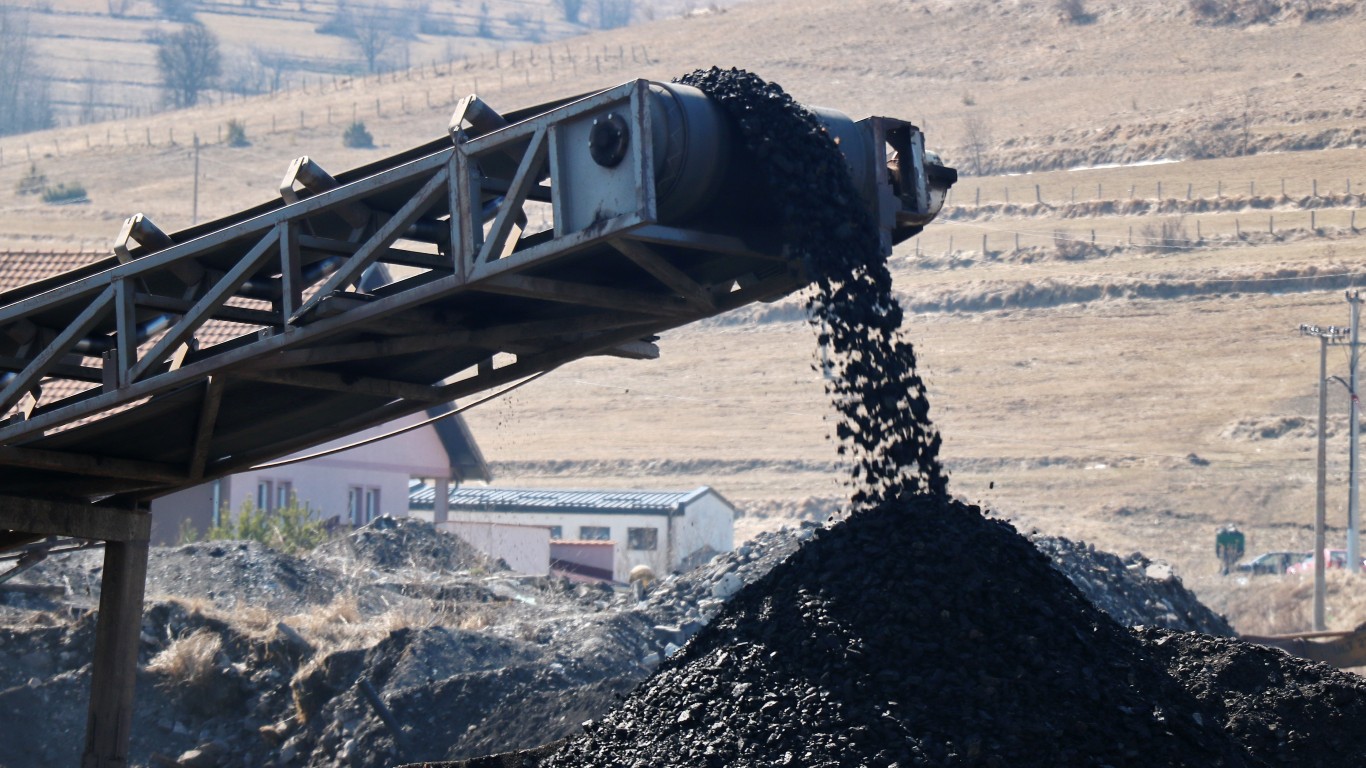
China’s central planners once again appear to be playing whack-a-mole to meet the country’s energy demands. On one hand, local and central governments recently created tax breaks and incentives totaling up to $6,000 until the end of the year to stimulate the country’s electric vehicle industry.
On the other hand, The People’s Bank of China has committed nearly $15 billion in new lending to boost coal production to run the country’s coal-fired power plants, and the central government is urging the regions to sign long-term contracts with domestic coal producers rather than relying on imported coal from Australia and the United States.
In April, Chinese coal production jumped 11% year over year to 12.09 million metric tons (tonnes) a day, although that total was lower than March’s all-time record daily production of 12.77 million tonnes. The government wants daily production to rise above 12.6 million tonnes and a total stockpile of some 620 million tonnes in order to ensure energy security in the country.
As Gabriel Collins and Andrew Erickson wrote recently in Foreign Policy magazine, “Despite green rhetoric in recent years, Beijing has never been serious about abandoning coal. … Fear and risk aversion both favor coal entrenchment, and both are in ample supply in Beijing these days.”
Chinese policy has played a major role in the improving fortunes of U.S.-based coal companies. Four major U.S. coal miners have seen their share prices rise by 114% to 242% over the course of the past 12 months. Total shareholder returns have risen by 129% to 273% over the same period.
Jefferies analyst Christopher LaFemina and his team have just upgraded their views on the stocks in their metals and mining universe, including coal, gold and iron ore. The analysts note that while “consensus earnings downgrades are a factor in other sectors for 2023, mining is still in an upgrade cycle.”
That does not mean the absence of risk: “Macro risks are still clearly elevated as an economic hurricane could be coming, but we would buy the miners to ride out the storm and maximize leverage to the subsequent recovery.” Coal mining stocks as a hedge against inflation and geopolitical worries may seem counterintuitive, but Jefferies notes:
Clean balance sheets, low valuations, strong cash flow, high yields, structural demand growth, and an implicit baked-in inflation hedge are defensive characteristics. Meanwhile, the sector offers ultra-high leverage to a subsequent recovery. The risk/reward tradeoff is compelling, at least on a relative basis, especially if the Chinese economy stabilizes/recovers.
Arch Resources
The analysts have upgraded shares of Arch Resources Inc. (NYSE: ARCH) from Hold to Buy and raised their $160 price target to $225. At a recent price of around $176.20 a share, the upside potential to the new price target is 27.7%. Arch’s share price has risen by around 180% in the past 12 months. The company’s dividend yield is 5.06%.
Jefferies did lower it is earnings per share (EPS) estimate for fiscal 2022 from $58.99 to $57.85, but it raised its 2023 EPS estimate from $28.61 to $51.43 and its estimate for 2024 from $11.16 to $37.61. Strong demand both internationally and domestically for steel is expected to keep metallurgical coal prices high, and rising demand for liquefied natural gas (LNG) exports could raise demand (and prices) for thermal coal in the United States.
Peabody Energy
Peabody Energy Corp. (NYSE: BTU) received an upgrade from Hold to Buy and a price target increase from $25 to $36. At a trading price of around $28.80, the upside potential based on Jefferies’ new price target is 25%. Peabody’s share price has increased by about 215% over the past 12 months. The company does not pay a dividend.
The Jefferies analysts also raised their EPS estimates for the stock. For 2022, the estimate rose from $7.29 to $10.25, for 2023 Jefferies raised its estimate from $4.25 to $8.75, and for 2024 the estimate rose from $2.39 to $6.34. In the analysts’ view, Peabody’s cash flow may “significantly exceed” current forecasts and the company could implement a capital return program from its expected free cash flow once the company pays down its $1.1 billion in long-term debt.
Ramaco Resources
Jefferies’s analysts raised their Hold rating on Ramaco Resources Inc. (NASDAQ: METC) to Buy and lifted the $16 price target to $25, implying an upside potential of 39.7%, based on a current trading price of around $17.90. Ramaco’s share price rose by 150% in the past 12 months, and the company pays a dividend yield of 2.52%.
For 2022, Jefferies lowered its EPS estimate from $5.57 to $5.26 but raised its estimate for 2023 from $4.52 to $6.19 and for 2024 from $3.05 to $4.63. Ramaco’s performance depends heavily on how well it executes to its production guidance and on strong prices for the company’s metallurgical coal. A recession-fueled decline in demand for steel that sends met coal prices below $150 per tonne is a significant risk to Jefferies’s outlook.
Warrior Met Coal
Warrior Met Coal Inc. (NYSE: HCC) was upgraded from Hold to Buy, and the price target on the stock was lifted from $36 to $50. Based on a recent share price of around $40.40, the upside potential based on Jefferies’s new price target is 23.8%. Warrior’s share price rose by about 94% over the past year, and the company pays a dividend yield of 0.6%.
The analysts raised their EPS estimates from $10.91 to $13.55 in 2022, from $3.40 to $8.38 in 2023, and from $3.51 to $8.73 in 2024. Jefferies bases its outlook on rising steel production and Chinese demand for metallurgical coal to support that rising production. If prices for the company’s hard-coking coal rise and stay above $300 per tonne, there is significant upside to this estimate the analysts say, a 30% boost to a new price target of $65. If the price should fall, Jefferies believes the price target could drop to $18.
LaFemina and the rest of the Jefferies team also looked at coal producers BHP, Rio Tinto and Vale and upgraded all three from Hold to Buy, as well as raised their price targets. While coal contributes to their overall revenues, coal does not account for a majority of their revenues.
It’s Your Money, Your Future—Own It (sponsor)
Retirement can be daunting, but it doesn’t need to be.
Imagine having an expert in your corner to help you with your financial goals. Someone to help you determine if you’re ahead, behind, or right on track. With SmartAsset, that’s not just a dream—it’s reality. This free tool connects you with pre-screened financial advisors who work in your best interests. It’s quick, it’s easy, so take the leap today and start planning smarter!
Don’t waste another minute; get started right here and help your retirement dreams become a retirement reality.
Thank you for reading! Have some feedback for us?
Contact the 24/7 Wall St. editorial team.

 24/7 Wall St.
24/7 Wall St.



